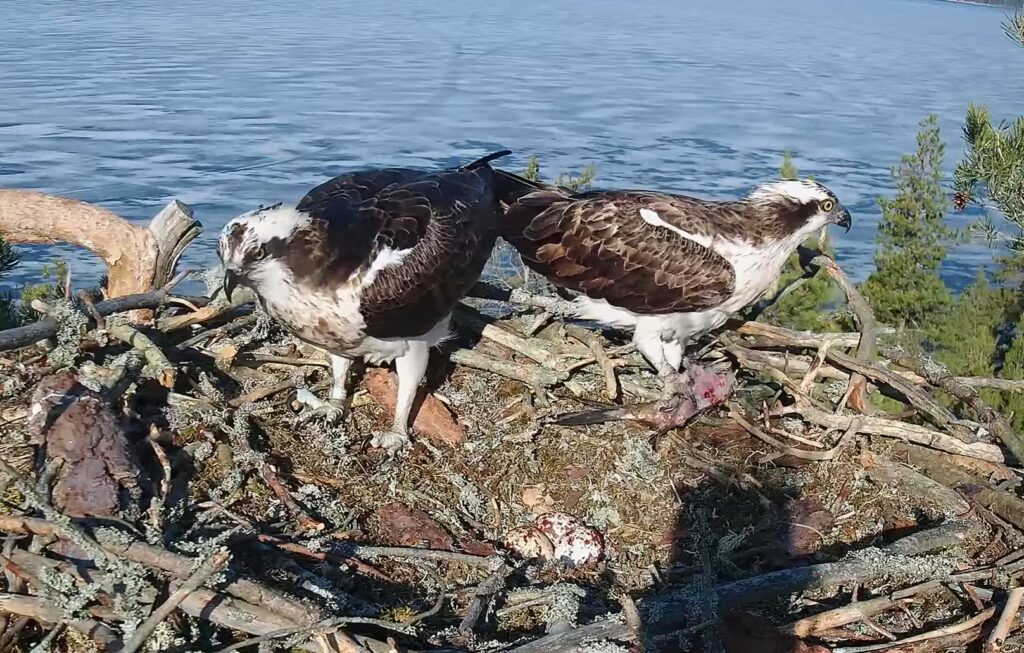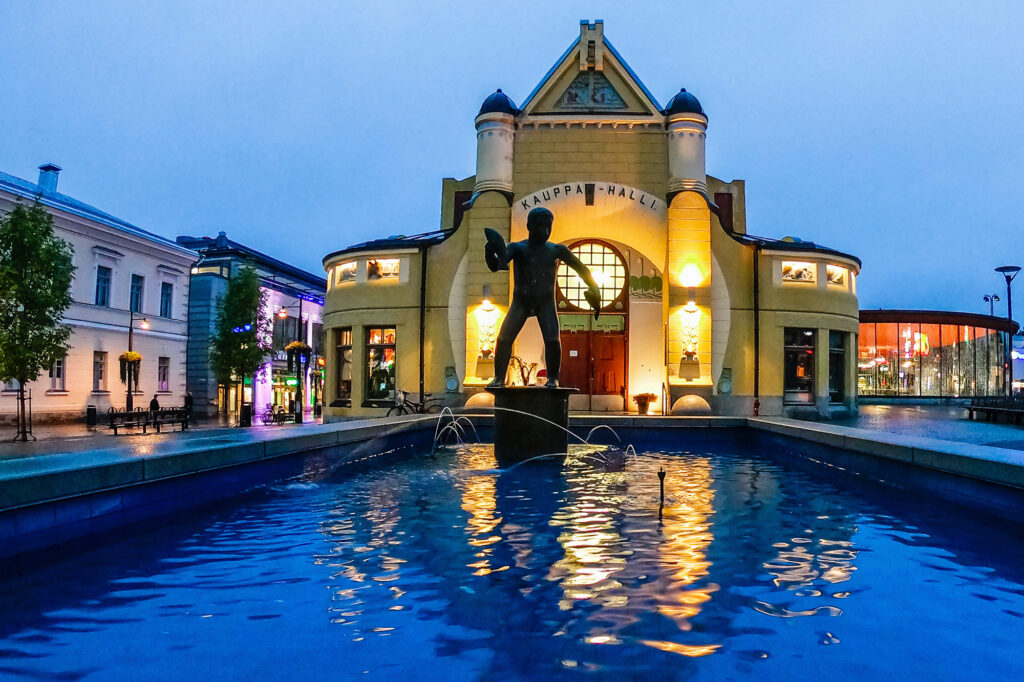Sääksilive (Osprey Cam in Finland)

The City of Kuopio will also this year, in cooperation with Pohjanmaan merikotkat ry, put in place an osprey cam in the area of the Kuopio National Urban Park, in a nest located in South Kallavesi. Cooperation with Pohjanmaan Merikotkat ry began in 2022.
Ospreys have returned from Africa back to their nesting area in mid-April. Egg-laying is expected to take place soon. Usually the female lays three eggs, one every two to three days. The brooding begins immediately.
During the live broadcast, you can watch, among other things, the laying and improvement of the nest, egg-laying and brooding, the hatching of the osprey chicks and departure for the return migration. The broadcast will be displayed until mid-September.
The events in the nest can be viewed retrospectively from the monitoring for a period of 12 hours. The camera image is also broadcast at night.
A weather-protected microphone camera is installed above the level of the nest. The power supply for image transmission is based on a solar electric system. There may be occasional technical disturbances in the video connection. The camera is installed by climbing the nest well in the spring before the ospreys return from their migration. The ospreys do not shy away from the camera that has appeared in the nest.
The ospreys in Kuopio National Urban Park were named Hilima and Onni as a result of the public vote in a year 2022.
#KuopionSääksiLive #KuopioOspreyCam #KuopionKansallinenKaupunkipuisto #KuopioNationalUrbanPark
If the video does not appear, you can also access it from this link (YouTube).
Events of the nest
- in April
- The ospreys arrive on their nesting territories in North Savo.
- The male usually arrives first and then the female.
- The egg-laying usually starts soon after entering the nest.
- in May
- The ospreys brood their eggs. The brooding takes about five weeks.
- in June
- The chicks began hatching.
- July–August
- Take-off at the turn of July and August, at seven to eight weeks old.
- in September
- The last osprey usually leaves for a return migration before mid-September.
- The female leaves first, then the chicks one at a time, and the male is the last to leave the nest.
The ospreys do well in Finland and in North Savo
The osprey has spread almost everywhere on the planet. It nests throughout Finland, wherever suitable nesting sites and fishing waters are available. In North Savo, too, most of the ospreys used nest in mires, but today typical nesting environments are the shores, islets and islands of water bodies.
Coming to the 1970s, the osprey was about to disappear from Finland, just like white-tailed eagle had. At that time, a large rescue plan was launched for saving the osprey and Finnish Osprey Foundation was established to coordinate the rescue programme. The bird ringers started building artificial nests everywhere in Finland.
The number of brooding couples in Finland is well over one thousand and the population is viable. The osprey population in North Savo is doing well and is still growing. In Kuopio, the number of ospreys only increased in the 2000s. In Kallavesi, the population has grown in more than ten years from individual pairs to approximately 20 pairs.
It is not easy to distinguish between the male and the female. A brown breast belt is stronger and more uniform on a female than on a male who does not always have it at all. The female is also larger, as is customary for birds of prey. The gender of an individual bird is difficult to determine.
-
Ospreys eat fish for food. It often fishes in fairly shallow waters and catches breams, for example, but also other fish, such as cyprinids, pike, perch and crucians. Ospreys also visits fish production pools and ponds. The most common catch for the ospreys living in North Savo is bream.
-
The nest of an osprey is usually in a tree, quite high, usually on thick branches in an old pine with a lacquer head. The nest is a large castlelike structure made of twigs (the nest of a predator bird) and is about one metre in diameter. Sometimes the nest may also be in a sea mark or a similar location if no suitable tree has been found. An artificial nest is a platform, often triangular, that is raised and attached to the top of a tree.
The nest is made of twigs and sticks. The familiar nest is decorated each year with fresh conifers and branches. The osprey also brings hay, reeds, lichen, moss and lumps of peat to the inside of the nest.
-
The egg-laying happens usually at the end of April. There are two to four eggs in the nest, which the osprey broods for five weeks or slightly more. The female does most of the brooding, but the male also temporarily brood when the female leaves the nest to eat and walk.
-
The chicks stay in the nest for about two months, seven to eight weeks, until they reach the ability to fly. As the chicks hatch, the male brings prey to the nest where the female protects the young from the sun and heat. As the chicks grow up, the female is also likely to bring food. However, the male is the main predator. The female, on the other hand, takes care of feeding the chicks. When the chicks are larger, the female may sometimes allow the male to feed them.
As they grow older and learn to fly, the fledglings visit the nest even when they are able to fly, because the demales bring prey fish to the nest.
-
Autumn migration starts at the beginning of September at the latest. Ospreys migrate alone. The first to leave is the female, usually at the end of August. Then the fledglings leave one by one. Finally, the male leaves before mid-September.
Ospreys head from Finland to tropical regions for the winter. Wintering areas are located in Africa, mostly in West Africa, but ring recordings of ospreys have been tracked even to South Africa. Ospreys from Northern Savo have been found in Nigeria and one even in South Africa. Ospreys from North Savo are not equipped with satellite locators, but they have ankle rings, so they can be identified, for example, by taking photos with a good camera.
The fledglings will not return to Finland the following summer, but will spend the summer in Africa. Only the next summer will they return to their birth areas for the first time and begin nesting at the age of 4 to 5 years, usually 10–40 kilometres from their place of birth.
Contact information
Heli Pitkänen
Master Planning Officer
heli.susanna.pitkanen@kuopio.fi
Heikki Soininen
City forest officer
